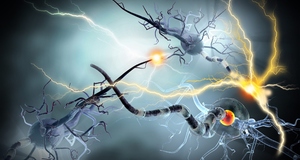Right Hemisphere Involvement in Auditory Processing: A Review
By
2016, Vol. 8 No. 10 | pg. 1/1 An orthodox opinion within neurolinguistics is left hemispheric lateralization for language processing. The left hemisphere of the brain is dominant for processing language, logic, critical thinking and reasoning (Gootjes et al. 1999; Hickok, Love-Geffen and Kilma 2002; Tyler et al. 2011), while emotion, auditory and non-verbal stimuli processing tends to be specialized to the right hemisphere (Joseph 1988; George et al. 1996). However, research on hemispheric lateralization adopts a limited view towards the right hemisphere and gives minimal recognition to its abilities and functions. Although there is a clear left hemisphere advantage in language processing, too little attention is given to the responsibilities of the brain's right hemisphere. Research using dichotic listening with verbal stimuli provides evidence for hemispheric asymmetry in language processing, which generally results in a right ear advantage, and therefore supports a left hemispheric dominance for language (Geffen, Traub and Steirman 1978; Godfrey 1974; Saetrevik and Hugdahl 2007). However, some studies on dichotic listening introduce the importance of the right hemisphere for auditory processing when background noise is presented (Hugdahl et al. 1999; Specht and Reul 2003), opening up a debate about the abilities of the right hemisphere and its ability to process auditory noise. An example of this is in the study by Dos Santos Sequeria et al. (2008). Results of this study emphasised the significance of the right hemisphere in noise processing. For instance, a left ear advantage (right hemisphere dominance) was found when background noise was presented with consonant-vowel (CV) syllables, thus suggesting an increase of involvement of the right hemisphere in processing auditory noise. Therefore in light of this study, this review will analyse to what extent there is a right hemisphere involvement in auditory noise processing. The right hemisphere and its ability to process auditory stimuli is demonstrated by research that suggests that the presence of background noise when spoken words are being used decreases the dominant role of the left hemisphere in language processing, as the involvement of the right hemisphere increases, supporting the similar findings of the study by Dos Santos Sequeria et al. (2008). This is shown in the research study by Shtyrov et al. (1998). The results concluded that in noisy conditions, the involvement of the left hemisphere’s auditory cortex in speech discrimination is considerably decreased while that of the right hemisphere increases.This is similarly shown by Shtyrov et al. (1999). It was found that background noise depressive effects on cortical responses was found mainly in the left hemisphere, whereas the right hemisphere was unaffected or exhibited increased activity in noise. Furthermore, Kujala and Brattico (2009) further emphasises the significance of noise processing in the right hemisphere, by suggesting that the left hemisphere dominance for speech discrimination becomes right hemisphere preponderant when noise is presented. This suggests that the background noise processing ability of the right hemisphere allows for a suppression of the responsibilities of the left hemisphere, as the left hemisphere’s involvement is decreased. Therefore, from these studies it can be inferred that the significance of the right hemisphere in processing auditory stimuli is to a far greater extent than it has previously been shown, and an auditory processing ability is a significant role within the right hemisphere. This evidence suggests that there is a capacity in the right hemisphere for processing background noise that the left hemisphere is not capable of, and thus provides the right hemisphere with firm responsibility for processing background noise. Although it is clear that the right hemisphere has an ability to process auditory noise in the presence of spoken words, it does not support the right hemisphere in its role in processing noise in isolation, thus providing limited evidence. A number of studies have reported a lateralization of noise, particularly music noise, to the right hemisphere. This provides the right hemisphere with further support to auditory process, as research shows that the right hemisphere can process advanced auditory stimuli such as music. For example, Hoch and Tillmann (2010) suggests a right hemispheric specialization for the processing of musical structures in healthy listeners through a dichotic listening experiment using eight chord sequences and 8 spoken syllable sequences which were simultaneously presented, each to one ear. In addition, Santosa, Hong and Hong (2014) found that the right hemispheric lateralization was about 75 per cent after presenting music segments to a listener. Furthermore, there are several studies in the literature that show significant deficits in processing music noise stimuli after right hemisphere damage, similarly supporting a right hemisphere lateralization to process music noise. For instance, Nicholson et al. (2003) concluded that the patient, after a right hemispheric stroke, was unable to discriminate pitch or rhythm patterns in musical stimuli although the segmental speech perception was preserved. In addition, the research study by Griffiths et al. (1997) found that the patient complained of a lack of musical appreciation following a right hemisphere infraction. There was a deficit in the analysis of rapid temporal sequences of notes which could underlie the musical deficit. Right hemisphere damage and music processing was also analysed by Rosslau et al. (2015). Results showed that discrimination of specific music patterns was unimpaired after a left-sided stroke, although patients with a right-sided stroke had worse results for fine melodic and rhythmic analysis. Therefore, the results of the studies presented have provided reliable support for the foreground of the right hemisphere in encoding auditory stimuli, particularly as it has also been shown through the significant deficits in music processing that occurs when there is damage to the right hemisphere. In addition, the evidence may also raise questions as to whether or not the right hemisphere should really be discredited for its abilities although there is sound research to support its capabilities to process music stimuli. Although this evidence has provided a strong argument for the role of the right hemisphere in auditory processing, it has been limited to music noise only. Further research regarding the involvement of the right hemisphere in other types of auditory stimuli is needed to confidently support the foreground of the right hemisphere in processing noise. There are numerous attempts within the literature that suggests a joint responsibility of both hemispheres in processing auditory stimuli. This argument suggests that both of the hemispheres are differently specialized to encode auditory stimuli, and one is not truly dominant over the other. This may provide the most realistic argument as it does not infer a favoured hemisphere for the processing of auditory noise. However, it does contradict the view that the right hemisphere has the dominant ability to process auditory noise. For instance, according to the studies by Jamison et al. (2006), Zatorre, Belin and Penhune (2002) and Robin, Tranel and Damasio (1990) there was an increased temporal variation lateralized to the left hemisphere and spectral resolution is better in the right hemisphere. In addition, Vanvooren et al. (2014) concluded that in 5-year-old children, there was a right hemisphere preference for processing syllable rate modulations and a symmetric pattern for phoneme rate modulations. A further study by Binder et al. (1996) also investigated early auditory processing and found that the left planum temporale responded equally to tones and words during passive listening and more strongly to tones during active listening. This infers that the left hemisphere, during active listening, is specialized for tones. The evidence from the child studies could serve as a base for an interesting future study on whether the different specializations of the hemisphere in auditory processing changes with age. Similarly, Nagle et al. (2013) observed that after a resection of the right superior temporal gyrus, speech recognition in quiet and non-speech sound processing (pitch patterns, environmental sounds) remained intact. However, speech recognition under adverse listening conditions was severely impaired. This suggests that the right superior temporal gyrus is specialized for the auditory processing of non-speech sounds. Thus, these studies have supported the different specializations of both hemispheres during auditory processing. Whereas previous evidence has suggested a sole right hemisphere dominance in noise processing and little involvement of the left hemisphere, these findings support the equal roles of the hemispheres to process auditory information. Although this is the most balanced argument, this approach is ambiguous. It does not offer a solid conclusion to the debate of the right hemisphere and auditory processing, making this argument ambivalent. Despite the evidence that has been shown in favour of the competence of the right hemisphere, there have been numerous studies suggesting that auditory processing is dominant in the left hemisphere of musicians. For example, Limb et al. (2006) found that musical training leads to the employment of the left-sided perisylvian brain areas that is typically active during language comprehension, during passive rhythm perception. Research by Johnson (1977) similarly suggests a left hemisphere lateralization of auditory processing for musicians. The results demonstrated that musicians mainly use the left hemisphere to process musical stimuli, while non-musicians use the right hemisphere. This is supported by Bever and Chiarello (1974) who reported that musicians recognize simple melodies better in the right ear (left hemisphere) than the left ear (right hemisphere). Similar results were also reported by Altenmuller (1986) who found a right-sided lateralization occurred more often in non-musicians and amateurs than professionals. As the evidence above infers, the right hemisphere can process auditory stimuli but to a certain capacity only. It could be suggested that musical training, that musicians and professionals in particular undergo, induces brain plasticity. For example, as the studies above have shown, with the aid of musical training the lateralization of music processing shifts to become left hemisphere lateralized. The auditory stimuli may become too complex for the right hemisphere to process, and thus becomes left hemisphere dominant. Considering the evidence for a right hemisphere lateralization of music, it would be assumed that musical training strengthens the processing in the right hemisphere but research contradicts this. This evidence does not necessarily discredit the right hemisphere per se, but suggests it has a limited capacity as it can only process music stimuli to a certain extent. From this, it can be concluded that music processing is perhaps not lateralized to one hemisphere but auditory encoding is shared between the two, providing limitations to the previous discussion on the right hemisphere and the lateralization of music and background noise. Notwithstanding the limitations each argument holds, the evidence presented above has established a right hemisphere ability to auditory process, but to a restricted capacity. The right hemisphere has been shown to have an ability to process noise from research that has been conducted on background noise and music. However, once the auditory noise becomes advanced, for example in musicians, a shift in lateralization takes place and noise processing becomes left hemisphere lateralized. Therefore, from this essay it seems that, there is a right hemisphere involvement in auditory processing which becomes limited when it requires a take-over of the left hemisphere. Furthermore, a reader could also infer that auditory processing is not lateralized to either hemisphere but both hemispheres have a responsibility and an ability to process auditory stimuli. This finding extends our knowledge of the plasticity of the brain, as the left hemisphere has been shown to take over an ability of the right hemisphere when the auditory stimuli becomes too complex. Similarly, identifying a right hemisphere ability to process auditory stimuli in non-musicians may assist clinicians in the treatment and assessment of auditory processing deficits. More broadly, research could now determine whether children exhibit the same lateralization for auditory processing as adults which will provide the right hemisphere with further foreground to process auditory stimuli. In addition, further research could analyse at what point in auditory processing the lateralization shift to the left hemisphere takes place, which could establish the maximum capacity of the right hemisphere. ReferencesAltenmuller, E. 1986. Brain electrical correlated of cerebral music processing in the human. European Archives of Psychiatry and Neurological Sciences [online]. 235 (6), 342-54. Available via: http://www.ncbi.nlm.nih.gov/pubmed/3743574 [Accessed 07 December 2015]. Bever, T., and Chiarello, R. 1974. Cerebral Dominance in Musicians and Nonmusicians. The Journal of Neuropsychiatry and Clinical Neurosciences [online]. 185 (4150) (August), 537-9. Available via: http://www.ncbi.nlm.nih.gov/pubmed/4841585 [Accessed 02 December 2015]. Binder, J., Frost, J., Hammeke, T., Rao, S., and Cox, R. 1996. Function of the left planum temporale in auditory and linguistic processing. Brain: A Journal of Neurology [online]. 119 (4) (August), 1239-47. Available via: http://www.ncbi.nlm.nih.gov/pubmed/8813286 [Accessed 10 December 2015]. Dos Santos Sequeria, S., Specht, K., Hamalainen, H., and Hugdahl, K. 2008. The effects of background noise on dichotic listening on consonant-vowel syllables. Brain and Language [online]. 107 (1) (October), 11-5. Available via: http://www.ncbi.nlm.nih.gov/pubmed/18602155 [Accessed 07 December 2015]. Geffen, G., Traub, E., and Stierman, I. 1978. Language laterality assessed by unilateral ECT and dichotic monitoring. Journal of Neurology, Neurosurgery and Psychiatry [online]. 41 (4) (April), 354-60. Available via: http://www.ncbi.nlm.nih.gov/pubmed/650243 [Accessed 07 December 2015]. George, M., Parekh, P., Rosinsky, N., Ketter, T., Kimbrell, T., Heilman, K., Herscovitch, P., and Post, R. 1996. Understanding emotional prosody activates right hemisphere regions [online]. 53 (7) (July), 665-70. Available via: http://www.ncbi.nlm.nih.gov/pubmed/8929174 [Accessed 01 December 2015]. Godfrey, J. 1974. Perceptual difficulty and right ear advantage for vowels. Brain and Language [online]. 1 (4) (October), 323-335. Available via: http://www.sciencedirect.com/science/article/pii/0093934X74900108 [Accessed 07 December 2015]. Gootjes, L., Raij, T., Salmelin, R., and Hari, R. 1999. Left-Hemisphere for processing of vowels: a whole-scalp neuromagnetic study. Neuroreport [online]. 10 (14) (September), 1987-91. Available via: http://www.ncbi.nlm.nih.gov/pubmed/10549810 [Accessed 07 December 2015]. Griffiths, T., Rees, A., Witton, C., Cross, P., Shakir, R., and Green, G. 1997. Spatial and temporal auditory processing deficits following right hemisphere infarction. A psychological study. Brain: A Journal of Neurology [online]. 120 (5) (May), 785-94. Available via: http://www.ncbi.nlm.nih.gov/pubmed/9183249 [Accessed 02 December 2015]. Hickok, G., Love-Geffen, T., and Kilma, E. 2002. Role of the left hemisphere in sign language comprehension. Brain and Language [online]. 82 (2) (August), 167-78. Available via: http://www.ncbi.nlm.nih.gov/pubmed/12096874 [Accessed 07 December 2015]. Hoch, L., and Tillmann, B. 2010. Laterality effects for musical structure processing: a dichotic listening study. Neuropsychologia [online]. 24 (5) (September), 661-6. Available via: http://www.ncbi.nlm.nih.gov/pubmed/20804254 [Accessed 02 December 2015]. Hugdahl, K., Bronnick, K., Kyllingsbaek, S., Law, I., Gade, A., and Paulson, O. 1999. Brain activation during dichotic listening presentations of consonant-vowels and musical instrument stimuli: a 150-PET study. Neuropsychologia [online]. 37 (4) (April), 431-40. Available via: http://www.ncbi.nlm.nih.gov/pubmed/10215090 [Accessed 07 December 2015]. Jamison, H., Watkins, K., Bishop, D., and Matthews, P. 2006. Hemispheric Specialization for Processing Auditory Nonspeech Stimuli. Cerebral Cortex [online]. 16 (9) (September), 1266-75. Available via: http://www.ncbi.nlm.nih.gov/pubmed/16280465 [Accessed 08 December 2015]. Johnson, P. 1977. Dichotically-stimulated ear differences in musicians and nonmusicians. Cortex [online]. 13 (4) (December), 385-9. Available via: http://www.ncbi.nlm.nih.gov/pubmed/604007 [Accessed 08 December 2015]. Joseph, R. 1988. The right cerebral hemisphere: Emotion, music, visual-spatial skills, body-image, dreams and awareness. Journal of Clinical Psychology [online]. 44 (5) (September), 630-73. Available via: http://www.ncbi.nlm.nih.gov/pubmed/2461390 [Accessed 29 November 2015]. Kujala, T., Brattico, E. 2009. Detrimental noise effects on brain’s speech functions. Biological Psychology [online]. 81 (3) (July), 135-43. Available via: http://www.ncbi.nlm.nih.gov/pubmed/19482230 [Accessed 07 December 2015]. Limb, C., Kemeny, S., Ortigoza, E., Rouhani, S. and Braun, A. 2006. Left hemispheric lateralization of brain activity during passive rhythm perception in musicians. The Anatomical Record. Part A, Discoveries in molecular, celluar, and evolutionary biology [online]. 288 (4) (April), 382-9. Available via: http://www.ncbi.nlm.nih.gov/pubmed/16550585 [Accessed 07 December 2015]. Nagle, S., Musiek, F., Kossoff, E., Jallo, G., and Boatman-Reich, D. 2013. Auditory processing following consecutive right temporal lobe resections: a prospective case study. Journal of the American Academy of Audiology [online]. 24 (7) (July-August), 535-43. Available via: http://www.ncbi.nlm.nih.gov/pubmed/24047941 [Accessed 02 December 2015]. Nicholson, K., Baum, S., Kilgour, A., Munhall, K., and Cuddy, L. 2003. Impaired processing of prosodic and musical patterns after right hemisphere damage. Brain and Language [online]. 52 (3) (August), 382-9. Available via: http://www.ncbi.nlm.nih.gov/pubmed/12907182 [Accessed 29 November 2015]. Robin, D., Tranel, D., and Damasio, H. 1990. Auditory perception of temporal and spectral events in patients with focal left and right cerebral lesions. Brain and Language [online]. 39 (4) (November), 539-55. Available via: http://www.ncbi.nlm.nih.gov/pubmed/2076495 [Accessed 08 December 2015]. Rosslau, K., Steinwede, D., Schroder, C., Herholz, S., Lappe, C., Dobel, C., and Altenmuller, E. 2015. Clinical investigations of receptive and expressive musical functions after stroke. Frontiers in Psychology [online]. 12 (6) (June), 768. Available via: http://www.ncbi.nlm.nih.gov/pubmed/26124731 [Accessed 29 November 2015]. Saetrevik, B., and Hugdahl, K. 2007. Endogenous and exogenous control of attention in dichotic listening. Neuropsychology [online]. 21 (3) (May), 285-90. Available via: http://www.ncbi.nlm.nih.gov/pubmed/17484591 [Accessed 08 December 2015]. Santosa, H., Hong, M., and Hong, K. 2014. Lateralization of music processing with noises in the auditory cortex. Frontiers in Psychology [online]. 8 (418) (December). Available via: http://www.ncbi.nlm.nih.gov/pubmed/25538583 [Accessed 29 November 2015]. Shtyrov, Y., Kujala, T., Ahvenien, J., Tervaniemi, M., Alku, P., IImoniemi, R., and Naataten, R. 1998. Background acoustic noise and the hemispheric lateralization of speech processing in the human brain: magnetic mismatch negativity study. Frontiers in Psychology [online]. 251 (2) (July), 141-4. Available via: http://www.ncbi.nlm.nih.gov/pubmed/9718994 [Accessed 29 November 2015]. Shtyrov, Y., Kujala, T., IImoniemi, R., and Naataten, R. 1999. Noise affects speech-signal processing differently in the cerebral hemispheres. Neuroreport [online]. 10 (10) (July), 2189-92. Available via: http://www.ncbi.nlm.nih.gov/pubmed/?term=shtyrov+1999 [Accessed 02 December 2015]. Specht, K. and Reul, J. 2003. Functional segregation of the temporal lobes into highly differentiated subsystems for auditory perception: an auditory rapid event-related fMRI-task. Neuroimage [online]. 20 (4) (December), 1944-54. Available via: http://www.ncbi.nlm.nih.gov/pubmed/14683700 [Accessed 01 December 2015]. Tyler, L., Marslen-Wilson, W., Randall, B., Wright, P., Devereux, B., Zhuang, J., Papoutsi, M., and Stamatakis, E. 2011. Left inferior frontal cortex and syntax: function, structure and behaviour in patients with left hemisphere damage. Brain: A Journal of Neurology [online]. 134 (2) (February), 415-31. Available via: http://www.ncbi.nlm.nih.gov/pubmed/21278407 [Accessed 02 December 2015]. Vanvooren, S., Poelmans, H., Hofmann, M., Ghesquiere, P., and Wouters, J. 2014. Hemispheric asymmetry in auditory processing of speech envelope modulations in prereading children. The Journal of Neuroscience [online]. 34 (4) (January), 1523-1529. Available via: http://www.jneurosci.org/content/34/4/1523.full [Accessed 29 November 2015]. Zatorre, R., Belin, P., and Penhune, V. 2002. Structure and function of auditory cortex: music and speech. Trends in Cognitive Sciences [online]. 6 (1) (January), 37-46. Available via: http://www.ncbi.nlm.nih.gov/pubmed/11849614 [Accessed 7 December 2015]. Suggested Reading from Inquiries Journal
Inquiries Journal provides undergraduate and graduate students around the world a platform for the wide dissemination of academic work over a range of core disciplines. Representing the work of students from hundreds of institutions around the globe, Inquiries Journal's large database of academic articles is completely free. Learn more | Blog | Submit Latest in Linguistics |


















